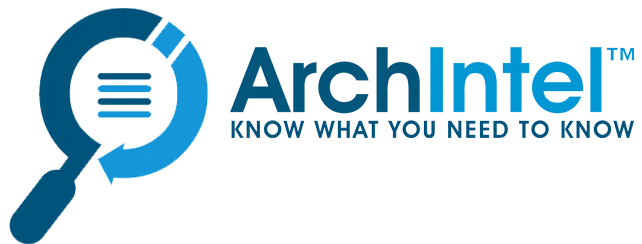What is the goal of competitive intelligence?
Competitive intelligence is the practice of monitoring your competitors, markets, and customers in order to acquire information, aggregate, and disseminate it. The goal of competitive intelligence is for a business or individual to be able to make smart and strategic decisions with that information.
These decisions can be made when the risks and opportunities are better understood. Often the results of the analyzed data are shared with a group of decision makers. This is often done in the form of a board report.
This board report will be a summary of all of the different types of intelligence collected after being parsed and analyzed. It is also likely to deliver these data to an executive group. An executive briefing will have similar data presented, but to an audience with different objectives.
Having, and more importantly, being able to interpret competitive intelligence will provide a holistic view of market conditions, current business standing, and competitors. There is a commonly held misbelief that competitive intelligence is primarily focused on gathering your competitors information. While this is certainly an important aspect, it is far from complete.
Being able to make better decisions is rooted in having as much relevant data as possible. This data does not end with competitors. It starts by looking at your own business model, goals, and directions. It then branches out to incorporate further entities.
Who would benefit from competitive intelligence?
When people think about competitive intelligence, often they conjure up thoughts of military or defense contractors conducting underhanded espionage. This is hardly an accurate picture of what it really is. In truth, a wide variety of industries would and do benefit from using it. Competitive intelligence is often industry driven. Certain industries rely on it and have adopted it as a necessary practice. In addition to defense and military, any fast paced industry with long life cycles would benefit.
Companies involved in fields such as telecommunications, pharmaceuticals, and software would all greatly benefit. If your business thrives from making critical and timely decisions that are either based off of market dynamics, competition, or KPI success, then chances are good that you would also benefit.
What types of intelligence are currently in use?

There are several types of intelligence that some people incorrectly intertwine and mislabel as all being under the umbrella of competitive intelligence. The three types of intelligence that are most common are market intelligence, business intelligence, and competitive intelligence. While they are all distinct, they may also all be gathered by the same individual or group.
Market intelligence:
Interprets trends and relationships by looking at external data supplied by local, domestic, and international markets. These data aid in creating broad decisions based upon market dynamics.
Business intelligence:
Examines a company’s own performance metrics and internal data. This, along with customer provided data, help to measure KPI success and profitability. This is often overlooked or viewed as less relevant to the overall health and success of intelligence. However, it is a foundational aspect that should never be passed over due to the dynamic nature of individual companies. Certain organizations regard different KPIs in higher or lower esteem.
Competitive intelligence:
Includes intelligence from competitors and likely market intelligence in order to provide insight and to guide decision making. This should also prevent any market or competitor changes from being a surprise which causes a reactionary action.
By combining all of these different aspects of intelligence, one can achieve a sophisticated and comprehensive view of the industry, competition, and one’s own business. While no one section of these is more important than another, they all collectively provide a global view from which a business can take action, alter strategy, or maintain current successes.
What is the benefit of competitive intelligence?
Markets are constantly evolving and are unpredictable. This is already widely understood. However, consumers are evolving as well. Businesses need to maintain an understanding of these evolutions in order to be successful. Competitive intelligence will provide answers to these changes.
Understanding that it is not only a tool to understand competition, yet it is equally as powerful a tool to understand market conditions and the entire competitive arena.
With a comprehensive understanding of all of the facets of intelligence, businesses are able to operate with limited restrictions. They can make focused decisions based upon data that they alone possess. This sort of advantage is what separates successful companies from those that are not.
How do you gather competitive intelligence?

There are several components of competitive intelligence. It is important to understand them In order to effectively use competitive intelligence. You will now need to create a plan that outlines how you will attain these data. These five steps outline an effective plan to gather competitive intelligence.
The first step is planning.
- Identify your potential competitive intelligence audience. How will they utilize the intelligence?
- Identify your business’ goals and objectives. Ensure that the information you will receive will be relevant to the success and goals that are established.
- Identify the location of the data you intend to acquire and how you intend to acquire it.
Step two will be the gathering of the data.
- Use any available tools in order to find the data you need. Those tools may be other people, the internet, and so forth.
Step three will be to organize the data that you have collected. You will likely have superfluous data once you have completed your gathering.
- Use logic and understanding of the industry to parse the data into usable sections.
- You will also need to ensure that your data is complete and not focused on one or two specific topics.
Step four will be to analyze the data that you have collected.
- Common sense will dictate where to begin. Use the context of the data to categorize your information into usable materials.
- Reflect on your goals that have been established and consider how these data sets aid in accomplishing the goals.
Step five is to produce understandable and readable data
- Determine to whom you will be presenting your data.
- Create concise and relevant information that can easily be absorbed.
- Use visual materials to avoid overcomplication of materials.
There are tools and services that exist which make the gathering of the simple data quick and easy. This would be publicly available and open data. This will provide limited results though and may not be effective in helping you achieve your established goals.
How do you interpret and disseminate your competitive intelligence?
Once you have completed the five steps, it may be wise to consider an outside source to aid in the analytics. The data returned may be complicated and overwhelming. This would be an opportunity to use a professional intelligence analyst.
The advantage of using a professional firm would also rest in their experience. You will quickly find out that there is a significant quantity of data available. However, your goal will be to find useful data. A professional can quickly categorize data into relevant and non relevant fields which will save time.
What is the future of competitive intelligence?

Without a doubt, every industry is becoming more and more competitive as saturation increases. Think back to twenty years ago, or even ten years ago. Businesses had fewer competitors and competitive intelligence was less robust than what we see today. However, if you think about the amount of new companies that are sprouting up every day, there seems to be little room left for them.
How will the industry change then to keep up? First and foremost, the data collection will need to be more robust. While data collection of competitors previously may have been limited to one or two of the strongest ones.
Soon this will expand to all competitors and even potential competitors as well. This will allow companies to acquire a stronger understanding of their industry and become a leader.
As competitive intelligence becomes more robust with industry growth, there will be an increase in ROI for the service. We may see an increase in artificial intelligence aiding in data collection. This will lead to more time spent on analyzing and disseminating data. The final result will be better intelligence provided to businesses and that data will be provided more often.
What does this mean for businesses now and in the future?
Competitive intelligence is a field that is encompassed by several moving parts. Effective intelligence gathering requires experience and knowledge about the field of study. Effective interpretation of these data are equally difficult due to quantity and variation. However, if you are able to have the right people supply, interpret, and disseminate the intelligence, then a business will be able to make robust decisions that will benefit itself and position itself better amongst the competition.
If your business is looking to improve its market share or increase profitability, then using competitive intelligence would be tantamount to success. In fact, not using a competitive intelligence service would be almost destructive in an industry which changes frequently and has no clear monopoly.

